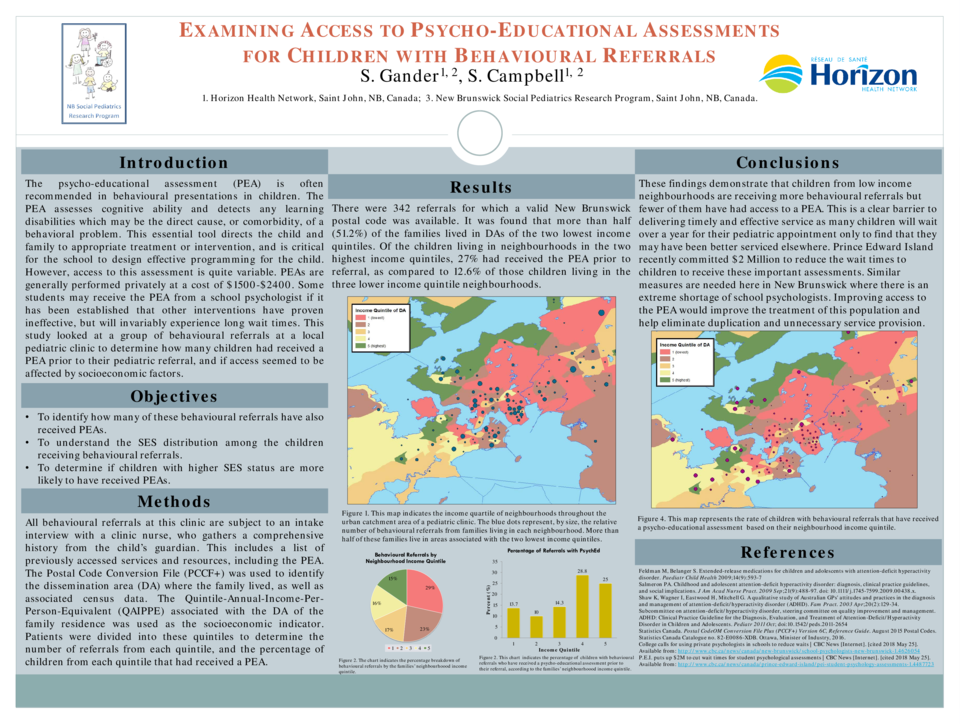Abstract
Background
The psycho-educational assessment (PEA) is often recommended in behavioural presentations in children. The PEA assesses cognitive ability and detects any learning disabilities which may be the direct cause, or comorbidity, of a behavioral problem. This essential tool directs the child and family to appropriate treatment or intervention, and is critical for the school to design effective programming for the child. However, access to this assessment is quite variable. PEAs are generally performed privately at a cost of $1500-$2400. Some students may receive the PEA from a school psychologist if it has been established that other interventions have proven ineffective, but will invariably experience long wait times. This study looked at a group of behavioural referrals at a local pediatric clinic to determine how many children had received a PEA, and if access seemed to be affected by their socioeconomic status (SES).
Objectives
- To identify how many of these behavioural referrals have also received PEAs.
- To understand the SES distribution among the children receiving behavioural referrals.
To determine if children with higher SES status are more likely to have received PEAs.
Methods
All behavioural referrals at this clinic are subject to an intake interview with a clinic nurse, who gathers a comprehensive history from the child’s guardian. This includes a list of previously accessed services and resources, including the PEA. The Postal Code Conversion File (PCCF+) was used to identify the dissemination area where the family lived, as well as associated census data. Socioeconomic status was determined by the Quintile-Annual-Income-Per-Person-Equivalent (QAIPPE) associated with the dissemination area (DA) of the family residence. Patients were divided into these quintiles to determine the number of referrals from each quintile, and the percentage of children from each quintile that had received a PEA.
Results
There were 342 referrals for which a valid postal code was available. It was found that more than half (51.2%) were for children living in DAs of the two lowest income quintiles. Of the children living in neighbourhoods in the two highest income quintiles, 27% had received the PEA prior to referral, as compared to 12.6% of those children living in the three lower income quintile neighbourhoods.






